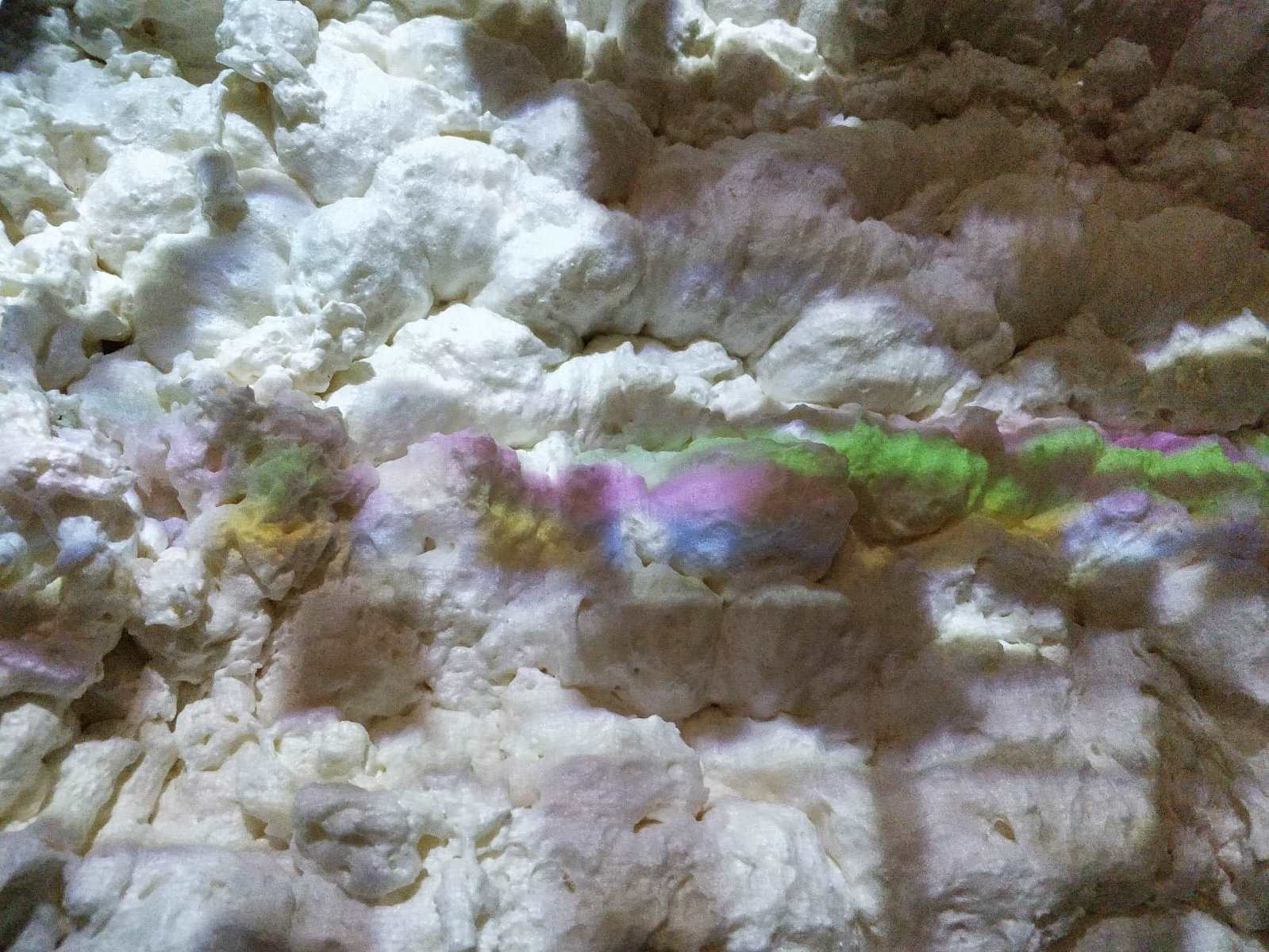The Coast Was Clear

We think back of the days when the foams stayed at shore. What’s left of a boundary when it occupies more space than the zones it divides?
Finding ourselves living on the motherfoam’s volatile periphery, we can no longer rely on the steady shorelines inscribed in our cartographic memory. Her swelling edges move further beyond our line of sight.
—
“Stillborn, emerging and drowned terrestrial insects progressively accumulated within foam lines, trapped and held in place by the surface tension of the bubbles within. These dense foam lines restrict the penetration of sunlight. The land beneath is left infertile.”
The foams are always coming, they’re not going. They haven’t gone and where would they go? We assume the land we are on is surrounded by water. Only memories remember a land where the coast is clear.
Boundaries: a boundary is a face
Once a shape. A contour, a modestly contained accessory of the seas. The cute fluff on old holiday photographs. A volume so negligible it could bother nobody, unobtrusive. It outlined the then most obvious division between land and waters. Solids and liquids after all tend to separate seamlessly.
As the stretches gained width, we lost sight of the far edges. Swollen boundaries are difficult to navigate. We no longer have access to land trapped beyond the edge. And the edge is subject to the will of the wind. Living on a volatile periphery. It was a solution to the spills they said, only later to add the premises. Just an edge with no end, in any direction.
What’s left of a boundary when it occupies more space than the zones it divides?
Textures: repetition evokes infinity.
Having neighbours stretches space. Tension between the bubbles keeps them all afloat. Back to back, side to side. Touching curved edges. Like a highrise building too close to your window, it’s just a texture. Repetition with edges out of sight; the foam is not discrete.
A foam is a multi-scale system. The bubbles seem static, but tension keeps them in constant flow. Discrete pockets form three-dimensional tessellations. Films can break under disjoining pressure. These effects rearrange the foam at scales unknown to the bubbles, which may be individual or collective, fracturing, or concatenating masses.
They say the density and viscosity of the gas can be neglected in predicting the velocity of the foams. Yet the air-filled containers constitute the moving mass. Repetition in the wind, with the wind, to the wind.
Mother Foam / Fertility
Spread wide, but out of sight. A source of contamination, or arbitration on the land. The motherfoam decides our movements. Her children extending from, but not of her, whisper across the land. Enveloping and consuming our carelessness she is the profound dignation of the whole.
When she sends her envoys from the ocean we see ourselves in them. One two, exploding, pustules. A wall of more. A horizon of more. Reflections, refractions, a mirror without an edge. If we knew the edges we could find a pattern. The little ones don’t stop. Coming forth, zooming, accumulating, hiding and entrenching. But when the herd moves the mother’s fertility is the lands desolation.
Animation / Discretion
On the good days, when the ground is steady, and we are high enough, we can afford to play with our captors. We’ll throw or kick the discrete chunks, the litter of the mother foam. Smell the captured mass as it decays in the pores, feel the grease and sand, and feel glee in it’s unthreatening nature. You’d almost consider them friendly, the compact foams rolling curiously to your door. They split and reconnect again - fleeting individuals, infinitely divisible and reviseable. Only temporarily exclusive, but unquestionably animated.
Individuals: Individualism is not the way forward
Foams start from an individual bubble. Voids wrapped in skin. Add more, a population, more voids, tesselating edges, expanding and supportive. Now the individuals can be lost within the dense foam lines. Dense enough the dangers of light, heat, and the drying air are protected from population.
They were the ideal solution. Where air met our excess it was churned and frothed. Carefully choosing the ratio of bacteria we swelled the mass. When it self sustained we applauded. Now we’re either one bubble. Or we’re consumed by the foam.
We meet discrete chunks, the litter of the motherfoam.
Don’t fight the wind
I remember more birds. Or stories of more. Gliding creatures once signatories of the ocean, now omens of our fate. We find them wrapped up in the hungry fluff. With so few places left to land the foams soap these beasts wet. Their feathers become too heavy, and their bodies too cold. They sink into the carnivorous entities. When the wind moves the foam, we don’t fight the wind.